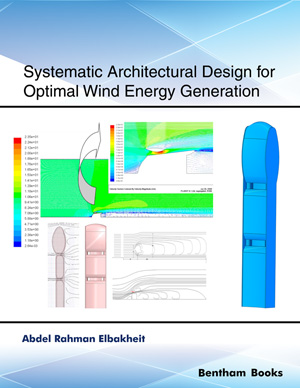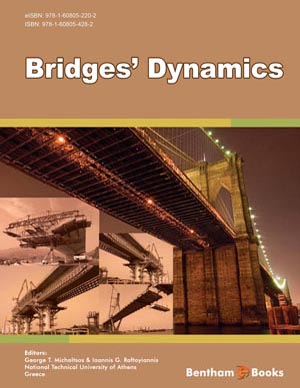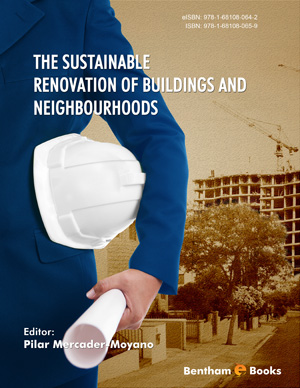Book Volume 5
Wind and Architecture
Page: 1-23 (23)
Author: Abdel Rahman Elbakheit
DOI: 10.2174/9781681088501121050002
PDF Price: $15
Abstract
In this chapter, the influences of wind on architecture are highlighted. Wind can have both positive and negative effects on architecture. Moreover, architecture can respond in proactive ways to maximise the benefits of wind forces and reduce or eliminate the negative impacts. This chapter sheds further light on notable architectural ideas translated into architectural case studies on harvesting wind energy in the built environment. Moreover, this chapter enables gaining insight into successful practices in architectural design solutions and ways and means to further enhance the performance of the buildings. In addition, the negative impacts of high wind velocities are identified, and possible solutions to mitigate them at their source are presented and discussed. Optimised architectural forms that can completely avoid excessive wind forces and devastating vortex shedding during the design stage are presented.
Aerodynamic Architectural Design
Page: 24-38 (15)
Author: Abdel Rahman Elbakheit
DOI: 10.2174/9781681088501121050003
PDF Price: $15
Abstract
This chapter attempts to scan various wind aerodynamic responses relevant to buildings that could be utilised for wind energy generation. It highlights some natural ventilation mechanisms and processes that allow continuous air streams amenable to further streamlining for wind energy generation. This study analyses various types of flows and their characteristics. Further streamlining of architectural forms to generate optimal wind flows prior to energy harvesting is discussed.
Wind as an On-site Energy Source
Page: 39-50 (12)
Author: Abdel Rahman Elbakheit
DOI: 10.2174/9781681088501121050004
PDF Price: $15
Abstract
This chapter presents tools and indicators that quantify available wind energy resources on site at global, regional, and territorial levels with passable accuracy. It gives some hints of wind availability locally for areas up to 10 × 10 km2. Areas with promising energy potential are depicted clearly together with other factors contributing to the further enhancement of wind resources such as height above ground level, terrains, and off-shore areas. Moreover, this chapter sheds some light on the capacity factor and provides the means for its estimation as an indicator for the level of achievable wind energy generation enhancement at a location, rendering the value of the structures erected to harvest wind energy as a step forward towards sustainability.
Architectural Aerofoil Form Optimisation for Wind Energy Generation
Page: 51-72 (22)
Author: Abdel Rahman Elbakheit
DOI: 10.2174/9781681088501121050005
PDF Price: $15
Abstract
This chapter presents a process enabling architectural design to achieve better prospects of integration of wind energy technologies to achieve sustainability. The process aims to utilise architectural forms, masses and profiles to streamline wind flows around buildings for harvesting wind energy using suitable conversion technology (i.e. wind turbines). It extends architectural design palette of form-finding rationale in terms of functionality and economic viability forward to achieve sustainability. Computational fluid dynamics (CFD) provided a springboard for navigating, evaluating and optimising design proposals. CFD capability of projecting air movements around buildings considering the magnitude, direction and pressure impact on the building surfaces is of paramount utility. In this chapter, ways and means to utilise wind separation around buildings are examined, together with aerofoil profiles capable of providing conducive conditions for wind flows to be harvested by turbines. Some parameters of these aerofoils are investigated, and guidelines for their optimum performance are defined, namely, aerofoil proximity to the building surface and the angle of attack of the aerofoil. This process would multiply incident wind velocities by up to 30% during periods of low wind velocities (i.e. lower than 5 m/s) and up to 150% during periods of high wind velocities (i.e. greater than 5 m/s).
Building-Integrated Wind Turbines
Page: 73-87 (15)
Author: Abdel Rahman Elbakheit
DOI: 10.2174/9781681088501121050006
PDF Price: $15
Abstract
Building-integrated wind turbines have special qualities that distinguish them from the entire wind turbines industry, which include the need to be much quieter, while maximising energy generation considering the limited swept area of the turbines. This has inspired a great deal of innovations that need to be investigated and revisited for further improvements across architecturally optimised buildings incorporating wind energy generation or building-integrated wind turbines. The aim is to draw some lessons or perhaps to mimic their principles within suitable architectural forms. One of the lessons learnt from a diffuser design that can be translated into building design to augment wind turbines is the area ratio, i.e. ratio of outlet to inlet areas, and length–diameter ratio, i.e. ratio of length to diameter. The larger these ratios, the larger the expected power output of the augmented wind turbines will be.
Effect of Turbine Resistance and Positioning on the Performance of Aerofoil Building-Augmented Wind Energy Generation
Page: 88-104 (17)
Author: Abdel Rahman Elbakheit
DOI: 10.2174/9781681088501121050007
PDF Price: $15
Abstract
In this chapter, more insight into the benefits of aerofoils and their integration into architectural forms to further enhance wind energy generation is investigated. More light is shed on wind flows around and under the aerofoil, when introducing turbines as resistance to flow under aerofoils. Turbine resistance is introduced using porous jump in CFD ANSYS FLUENT. The estimated energy generation is calculated based on the resulting wind velocities, pressure drop and area per square metre. In general, resistance from turbines lowered the resulting wind velocities; however, this reduction was the lowest for the optimised case (Chapter 4). The resulting wind velocity was 13.2 m/s for optimised case and 10.85 m/s for the unoptimised case. In addition, the optimised case exhibited a greater pressure drop across the turbine than that of the unoptimised case, thus producing 1.6–1.9 times more energy than that of the unoptimised case. For the same cases, an increase in energy production of up to 3.38 times is obtained by appropriately placing the turbine (i.e. 2 m from the tip of the aerofoil on the windward side) [1].
Introduction
Systematic Architectural Design for Optimal Wind Energy Generation is a handy reference on the aerodynamic architectural forms in buildings for optimizing wind energy conversion processes. Chapters of the book cover the basics of wind energy generation and building design that make them more conducive for generating wind power, and in line with sustainable energy design goals. Key Features: - 7 chapters organized in a simple, reader-friendly layout - A learning approach to the subject that highlights key concepts in architectural science and wind energy physics - Introduces readers to the application of computational Fluid Dynamics (CFD) tools to visualize and simulate architectural forms under wind actions - An objective focus on architectural forms is presented, including the role of the form in optimizing wind energy conversion and the negative effects of wind on certain forms - Covers the building and positioning of different types of wind turbines - References for further reading Systematic Architectural Design for Optimal Wind Energy Generation is an essential reference for students of architecture at all levels, professional architects, as well as readers interested in green building design, renewable energy, and sustainability studies that pave the way towards proactive environment-friendly solutions.












